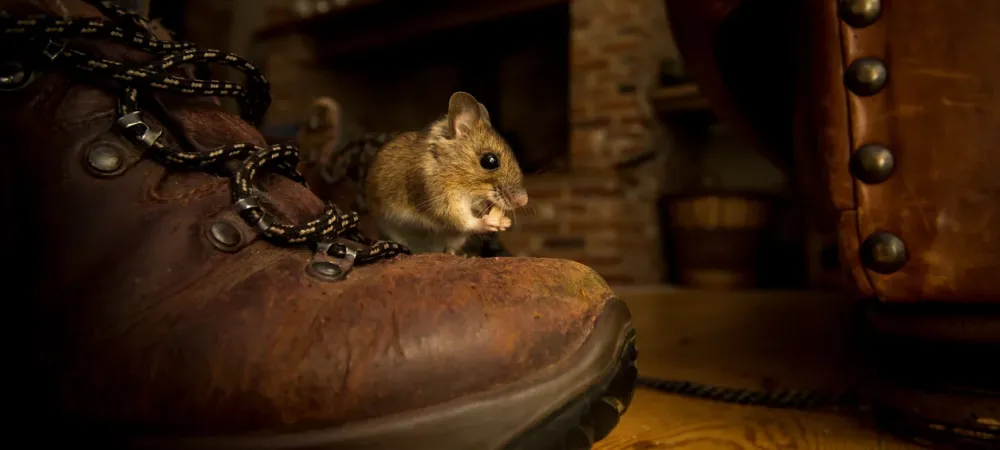WHY AREN’T MOUSE TRAPS EFFECTIVE | SETTING MOUSE TRAPS

Implementing mouse traps to neutralize a mouse infestation is harder than you might think, especially since mice often ignore traps. It requires an understanding of trapping methods, trapping products, and an overall understanding of the habits and habits of mice. Here are some tips and tricks for setting mouse traps and common mistakes people make.
BEST MOUSE TRAP PRACTICES
- Mouse Trap Position: Mice tend to stay in areas next to walls or other vertical surfaces, so if you place a trap in the middle of a room, you're not likely to catch a mouse. It’s not only vital to know where to place a mouse trap, but also how you place it. Choose a place where you’ve found signs of mice and make sure the trap is perpendicular to the wall, not parallel.
- Humane Mouse Traps: There are several humane mouse trap options that can be just as effective as snap traps. These traps operate as catch and release traps, but be careful of where you release them. It’s recommended to release the mouse at least two miles away from your home to prevent them from getting right back in. To truly work as a humane mouse trap, release them as soon as possible to allow them to find food and water.
- Wear Gloves: Not only are gloves good for sanitation and safety reasons when setting up your mouse trap, they will also protect the trap from human scents. If the mouse detects a human smell coming from the trap, it might be discouraged and run away.
MOUSE TRAP MISTAKES
- Buying a faulty design: Not all mouse traps are created equal. If you get the wrong one, you're setting yourself up for a ton of frustration. Mice are wired with a threat avoidance behavior that will protect them from many mouse trap designs.
- Setting the trap in the wrong area: If you get the right trap, you will still have trouble catching mice if you don’t place the trap in the right place. Mice have specific habits and behavior that must be taken into account when attempting to trap them. If you place a trap in the middle of a room, you're not likely to catch a mouse. These are skittish creatures that prefer to have one side of their body touching a wall. They will rarely go for food on a trap that is set in a place that makes them feel unsafe.
- Using the wrong bait: An effective trap can be made ineffective by applying the wrong kind of bait. Contrary to popular belief, cheese is probably one of the worst baits out there. Peanut butter is the best bait for mouse traps. Its stickiness makes it difficult to get off the latch, and more likely to cause the trap to trigger.
- Underestimating mice: Another way mouse traps fail is when people don't give those mice enough credit. They are fast and alert, taking their time and being observant while they eat. That’s why it’s common to find a trap that has been sprung and no rodent inside, they simply didn’t fall for it. For this reason, a professional exterminator is trained to place traps in a way that will prevent mice from evading them when they spring. This entails an understanding of foraging behavior, eating habits, and reactive traits. So how do you catch a mouse when traps don’t work?
HOW TO CATCH A MOUSE WHEN TRAPS DON’T WORK
Are traditional mouse traps not working for you? On top of some mouse traps not being sensitive enough, mice can learn to avoid traps! If this is the case, you might need a different approach.
- Get a bucket. Take a spoon and put peanut butter at the end of it, tape the spoon so that the peanut butter half is hanging over the counter, and place a bucket on the floor beneath it. The mice can see the peanut butter, run to it, and fall in.
- Use a plastic bottle. This one also requires a bucket. Pierce a plastic bottle through the middle and lay it across the bucket, cover the bottle in peanut butter, then set something up (like a wood plank) against the bucket. The mouse will run up the bucket, try to get the peanut butter, roll off the plastic bottle, and fall in.
- Call an exterminator! Are the mice still ignoring your traps? This can happen with any kind of DIY solution you attempt, so it might be time to call in a professional.
WHY YOU NEED AN EXTERMINATOR
Even the best mouse traps can be ineffective, and just because you successfully catch a mouse, doesn’t mean you’ve solved the problem. That’s because mouse control begins with the holes they used to get into your home in the first place, and that requires professional help! At Witt Pest Management, our team is instructed in protocols that have been developed and tested by national experts in the pest industry. You can expect that they will apply every control option available to get the job done right.
